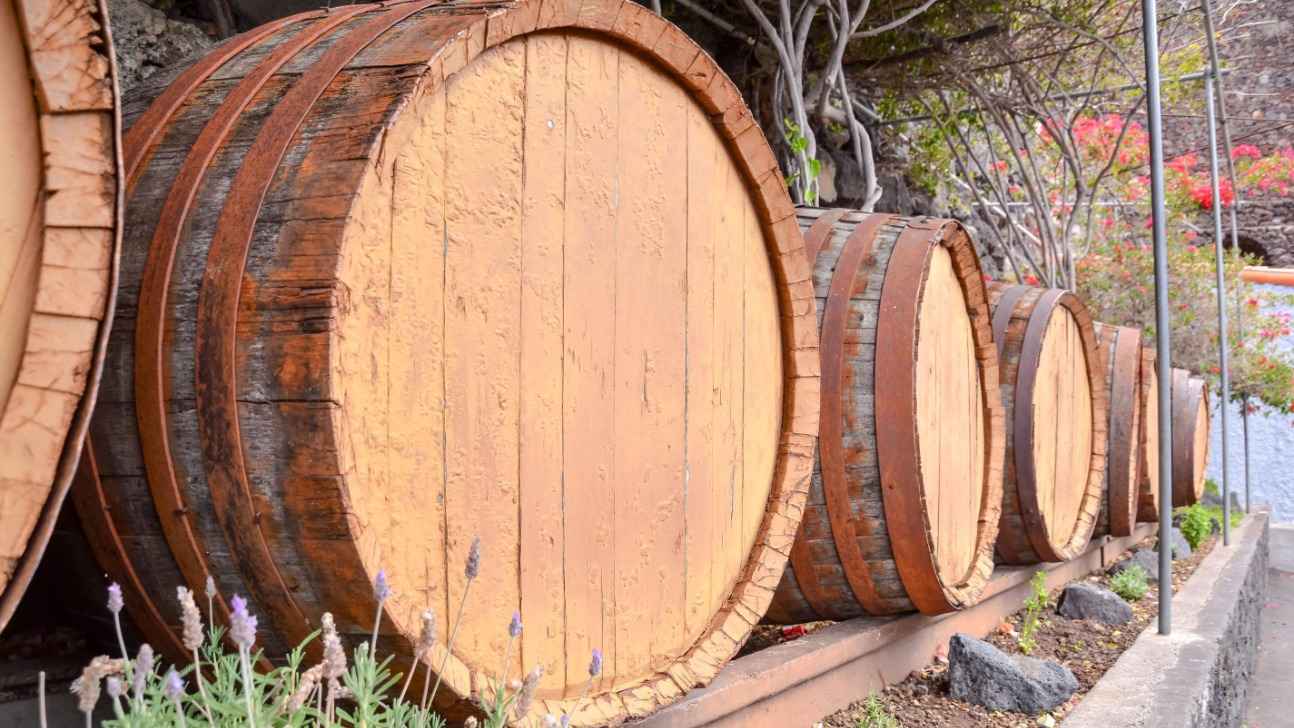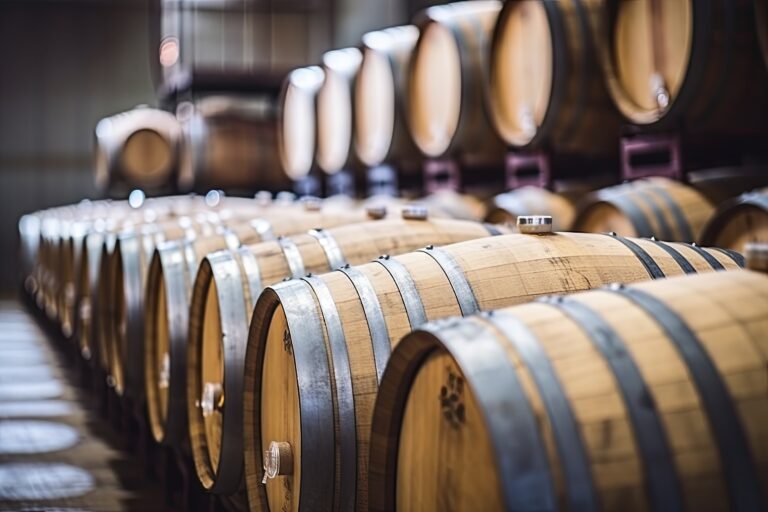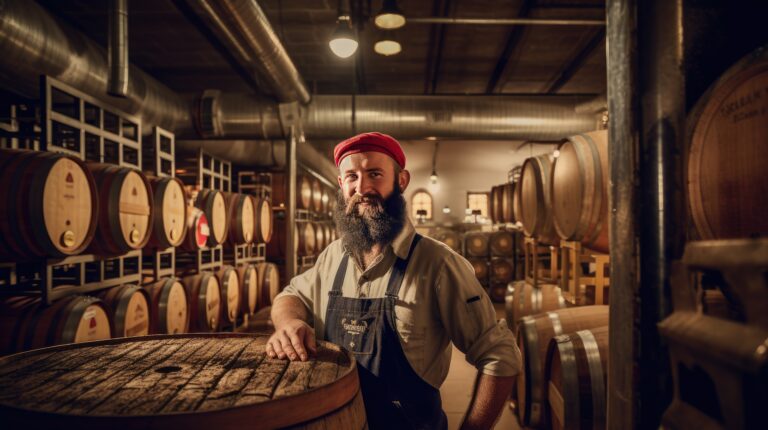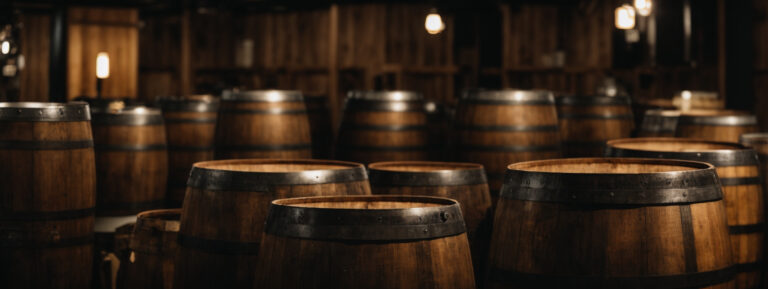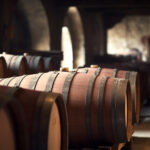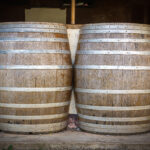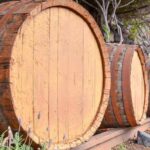In the hallowed, temperature-controlled sanctuaries where whiskey matures, the barrel stands as a silent chronicler, its oaken staves acting as the scribes, meticulously penning the spirit’s grand saga. The thickness of these staves, a seemingly subtle detail, is a pivotal factor in shaping the very essence of the whiskey, dictating the narrative arc, emotional depth, and enduring legacy of its maturation.
From Utilitarian Vessels to Exquisite Instruments of Flavor
The story of wooden barrels is a chronicle etched in time, a testament to human ingenuity and serendipitous discovery. Initially, barrels were crafted for their functional purpose, chosen for their durability and ability to contain and transport liquids. However, the unexpected revelation that wood imparted unique flavors to spirits transformed barrel-making from a simple craft to an exquisite art. The thickness of the staves, once a matter of mere structural integrity, became a crucial instrument in the distiller’s orchestra, a means of composing the whiskey’s character with unparalleled artistry.
Unraveling the Intricate Dance of Organic Compounds
Wood, at its core, is a molecular tapestry, a complex weave of organic compounds, including lignin, cellulose, and hemicellulose. During the aging process, these compounds engage in a delicate dance with the whiskey, each contributing to the spirit’s final composition. Lignin, the polymer that provides structural support, undergoes a gradual breakdown, releasing vanillin, the aromatic compound responsible for the sweet, vanilla notes that grace many whiskeys. Cellulose and hemicellulose, the primary structural components of wood, contribute to the whiskey’s texture and mouthfeel, adding layers of complexity to the sensory experience. The thickness of the staves directly influences the tempo and intensity of these molecular interactions.
- Capillary Choreography and Flavor Extraction: The porous nature of wood acts as a network of microscopic capillaries, allowing whiskey to penetrate deep within the staves, facilitating the extraction of flavor compounds. Thinner staves, with their greater surface area, provide more opportunities for this interaction, leading to a faster and more intense extraction, like a meticulously choreographed dance of molecules.
- Oxidative Orchestration and Chemical Transformation: Oxygen, the conductor of the maturation process, permeates the barrel through the staves, orchestrating a complex series of chemical transformations. The thickness of the staves regulates the tempo of oxygen exchange, influencing the pace and intensity of these transformations, like a conductor guiding a molecular orchestra through a complex score.
Harmonizing Vivacity and Depth in the Aging Symphony
Thinner staves allow for a more vibrant exchange of oxygen, accelerating the maturation process. This enhanced interaction promotes the breakdown of congeners, undesirable compounds produced during fermentation, and the extraction of desirable flavor compounds from the wood. However, excessive oxygen exposure can lead to over-oxidation, resulting in a dissonant note, a harsh, astringent spirit that lacks harmony.
- The Maillard Melody and Flavor Development: Oxygen plays a vital role in the Maillard reaction, a complex chemical process that transforms sugars and amino acids, creating a rich melody of toasty, roasted flavors, like a maestro conducting a flavorful composition.
- The Angel’s Elegy and Flavor Concentration: Evaporation, known as the “angel’s share,” is more pronounced in barrels with thinner staves, leading to a concentration of flavors and aromas in the remaining whiskey, like a poignant elegy that resonates with intensity and depth.
Thicker Staves and the Development of Nuanced Complexity in the Maturation Sonata
Thicker staves slow the tempo of oxygen exchange, promoting a more gradual and controlled maturation. This extended interaction allows for the development of complex, nuanced flavors that unfold over time, like a slow, deliberate movement in a classical sonata. The slower pace allows for a gentler extraction of flavors, preventing the whiskey from becoming over-oaked, maintaining the harmony and balance of the spirit.
- The Diffusion Dialectic and Flavor Release: Thicker staves create a steeper concentration gradient, slowing the diffusion of flavor compounds from the wood into the whiskey, resulting in a slow-release of flavors, like a dialectic between restraint and release, a conversation between wood and spirit.
- Ester Echoes and Aromatic Tapestry: Slow oxidation encourages the formation of esters, fruity and floral compounds that contribute to the whiskey’s aromatic tapestry, like echoes of nature’s beauty woven into a grand composition.
Composing the Whiskey’s Character Through Stave Selection
Distillers, the composers of the aging process, employ various techniques to manipulate the influence of stave thickness on the maturation process. They might use thinner staves for an initial crescendo of flavor, then transfer the whiskey to thicker staved barrels for a more refined and balanced finale, like a conductor guiding the orchestra through a dynamic performance, shaping the whiskey’s destiny.
- The Double Barrel Duet and Layered Harmonies: Aging whiskey in two different barrels with varying stave thicknesses creates layered harmonies and adds complexity to the final product, like a duet between two instruments creating a harmonious blend, a symphony of flavors.
- The Finishing Flourish and Final Flavor Cadence: A short period of aging in a barrel with thinner staves before bottling can add a final burst of flavor and enhance the whiskey’s overall character, like a final cadence in a musical composition, a perfect ending to the whiskey’s journey.
Environmental Influences on the Symphony of Maturation
Climate, the ever-present conductor of nature’s orchestra, plays a significant role in the aging process. Warmer temperatures accelerate chemical reactions, while colder temperatures slow them down. Distillers must consider these environmental cadences when selecting stave thicknesses, adapting their approach to the specific climate and warehouse conditions, like a conductor adapting the tempo to the acoustics of the hall, ensuring the whiskey reaches its full potential.
- Warehouse Microclimates and Variations in Aging: Temperature and humidity variations within the warehouse, such as differences between the upper and lower levels, affect the aging process, creating microclimates that influence the whiskey’s development, like different sections of an orchestra playing their own parts.
- Seasonal Sonatas and Dynamic Transformations: Fluctuations in temperature and humidity throughout the year contribute to the dynamic interaction between wood and whiskey, influencing the rate and intensity of flavor development, like seasonal sonatas played out in the barrel, each season bringing its own unique melody.
Unlocking the Wood’s Hidden Palettes of Flavor
Charring the inside of the barrel, like preparing a canvas for a masterpiece, creates a layer of activated charcoal, which acts as a filter, removing undesirable compounds from the whiskey. It also caramelizes the sugars in the wood, imparting sweet, toasty flavors. Light, medium, and heavy char levels each contribute distinct palettes of flavor, like different brushstrokes on a painter’s canvas, each adding its own unique hue.
- Char Levels and Flavor Palettes: Varying char levels offer a spectrum of flavors, ranging from subtle vanilla and caramel notes to intense roasted and smoky flavors, like a palette of colors available to the artist, allowing for endless possibilities.
- The Alligator Aria and Bold, Smoky Riffs: A heavy char, known as the “alligator char,” creates a cracked, alligator-like appearance on the inside of the barrel, imparting bold, smoky riffs to the whiskey, like a dramatic aria sung with power and passion.
Modern Techniques and Experimental Compositions in Whiskey Craft
Modern distilleries are pushing the boundaries of traditional whiskey-making techniques, experimenting with diverse stave types, char levels, and wood varieties to create unique and exciting whiskeys, like jazz musicians improvising on a classic theme, pushing the boundaries of creativity.
- Alternative Woods and Unique Flavor Riffs: Distilleries are exploring the use of alternative woods, such as French oak, acacia, and chestnut, each imparting its own distinct flavor riff, adding new dimensions to the whiskey’s composition.
- Micro-Distilleries and Experimental Compositions: Micro-distilleries are at the forefront of innovation, driving experimentation and creativity with new and unconventional compositions, pushing the boundaries of what’s possible in whiskey craft.
A Deeper Dive into Wood’s Structural Influence
To truly grasp the impact of stave thickness, we must delve into the very anatomy of a stave. Beyond the broad categories of lignin, cellulose, and hemicellulose, lies a complex network of vessels and fibers that dictate how whiskey interacts with the wood.
- Grain Density and Orientation: The density of the wood’s grain and its orientation relative to the whiskey’s surface directly influence the rate of extraction. Tighter grains slow the process, while looser grains accelerate it. Quarter-sawn staves, with their vertical grain, offer a more consistent and controlled interaction.
- Pore Size and Distribution: The size and distribution of pores within the wood affect the depth of whiskey penetration and the rate of oxygen exchange. Older oak trees, with their finer pores, offer a more nuanced interaction.
- Medullary Rays and Flavor Transport: Medullary rays, radial structures that transport nutrients within the tree, also play a role in flavor transport. Their orientation and density influence the movement of flavor compounds within the stave.
Beyond Thickness – The Art of Barrel Selection
While stave thickness is a crucial factor, distillers possess a broader toolkit for manipulating barrel influence.
- Wood Seasoning and Drying: The process of seasoning and drying oak staves significantly impacts their permeability and the release of flavor compounds. Air-dried staves, seasoned for extended periods, offer a more complex and nuanced interaction.
- Toasting and Charring Variations: Beyond the standard char levels, distillers may employ specific toasting profiles, using varying temperatures and durations to create unique flavor profiles.
- Barrel Reuse and “Second-Fill” Influence: The previous contents of a barrel, such as bourbon, sherry, or wine, leave a lasting imprint on the wood, influencing the character of subsequent whiskeys aged within.
Tales of Staves and Spirit
The history of whiskey is replete with anecdotes that highlight the profound influence of barrel staves.
- The “Angels’ Share” and the Rise of Thinner Staves: In warmer climates, distillers observed the rapid evaporation of whiskey through thinner staves, leading to the “angels’ share.” This phenomenon, while resulting in volume loss, also concentrated flavors, leading to the appreciation of thinner stave’s potential.
- The “Whisky Galore!” Effect: During periods of scarcity, barrels were reused multiple times, leading to the discovery of “second-fill” influence. The subtle flavors imparted by these reused barrels became a hallmark of certain distilleries.
- The Rise of “Virgin Oak” and Bold Flavors: The modern era has witnessed a resurgence in the use of “virgin oak” barrels, crafted from new wood. These barrels, with their intense flavor profile, have become a staple for certain styles of whiskey.
The Future of Stave Craft
The world of barrel making is not static. Modern innovations are pushing the boundaries of what’s possible.
- Infrared Toasting and Precision Flavoring: Infrared toasting allows for precise control over the toasting process, enabling distillers to create highly specific flavor profiles.
- Micro-Oxygenation and Controlled Maturation: Micro-oxygenation techniques introduce controlled amounts of oxygen into the barrel, allowing distillers to fine-tune the maturation process.
- Sustainable Forestry and Oak Conservation: Distilleries are increasingly committed to sustainable forestry practices, ensuring the long-term availability of high-quality oak for future generations.
A Comprehensive Exploration of Whiskey’s Maturation
- How does stave thickness affect the texture of whiskey? Thicker staves, through slower extraction, create a smoother mouthfeel and higher viscosity. Thinner staves, through faster extraction, can create a more robust and sometimes even astringent texture, depending on the length of aging.
- Can stave thickness mitigate the effects of “hot” or “cold” aging? Yes, by adjusting the stave thickness, distillers can compensate for extreme temperature variations, ensuring a more consistent maturation process.
- How do distillers determine the optimal stave thickness for a specific whiskey? Distillers consider a multitude of factors, including the desired flavor profile, the climate of the aging warehouse, the type of grain used, and the length of maturation.
- What are the ethical considerations surrounding the use of new oak barrels? The use of new oak barrels raises concerns about deforestation and the sustainability of oak forests. Distilleries are increasingly adopting sustainable forestry practices and exploring alternative wood sources.
A Final Ode to Oak
The barrel, with its carefully chosen staves, remains a testament to the enduring legacy of wood in the world of whiskey. It’s a silent partner in the creation of a spirit that embodies time, tradition, and artistry. As we savor each dram, let us appreciate the intricate symphony of flavors, a composition shaped by the whispering oak, the patient passage of time, and the masterful hand of the distiller, a legacy that continues to evolve and inspire.
